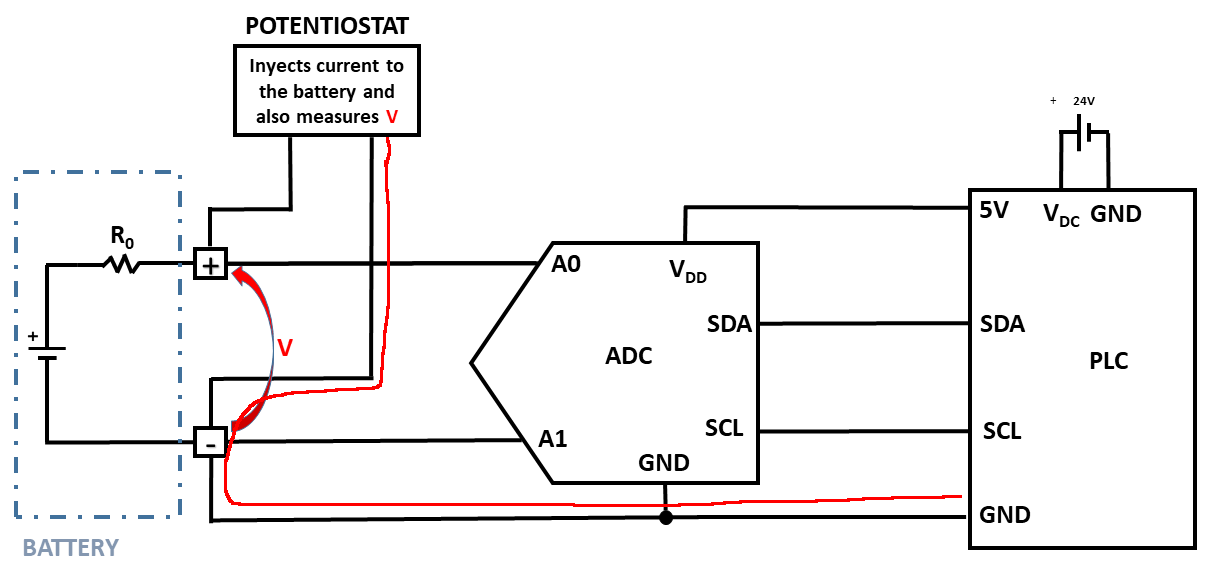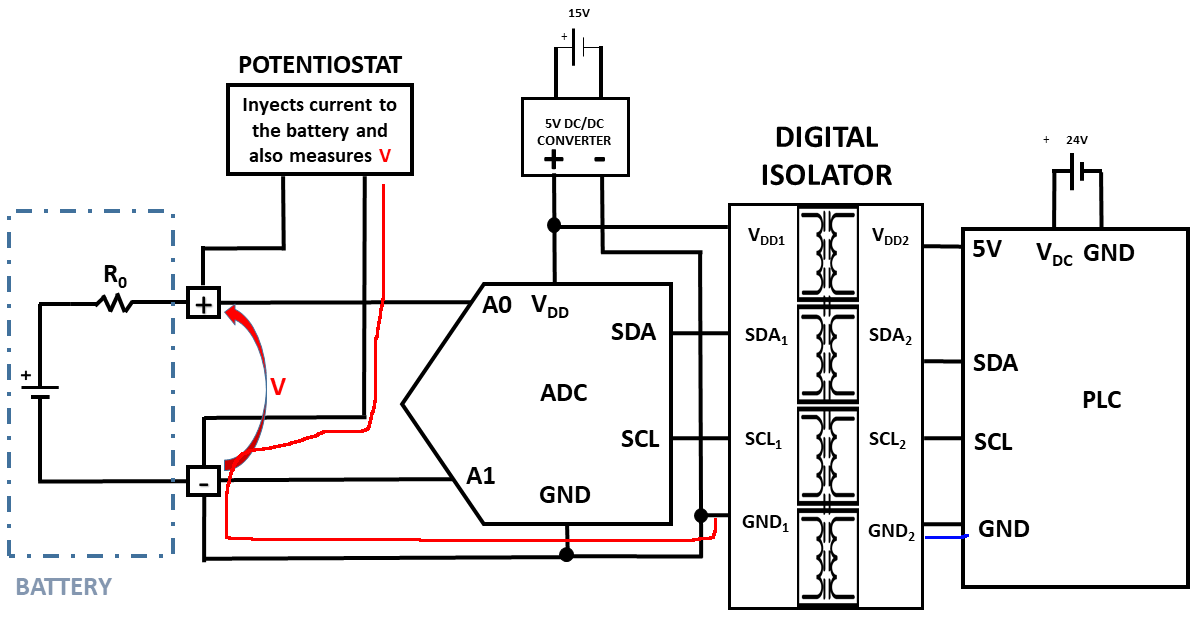I have designed a circuit to measure the voltage of a battery. This battery is being cycled all the time by a potentiostat (charging-discharging) which injects positive current to charge the battery and negative to discharge it (and simultaneously it measures the battery voltage V.) In the past, I had problems with the voltage measurement (low accuracy) and the solution was to add a digital isolator to separate both analog and digital grounds (initial question here).
This is the original design with no isolator:
This is the new design with the digital isolator for I2C communication between the ADC (ADS1115) and the PLC (based on the Arduino Mega):
My questions are:
- I have solved the problem in an very practical way, but how can I prove "visually" (using electrical diagrams like these ones and drawing currents/voltages) or in any scientific way that with the new design the ground loops disappeared? I find it very difficult to imagine this as normally the ground loops are not drawn.
- I had to use a DC/DC converter to power the ADC, because if I use the 5V coming from the PLC though the isolator, I would get no I2C communication. Why is this?




